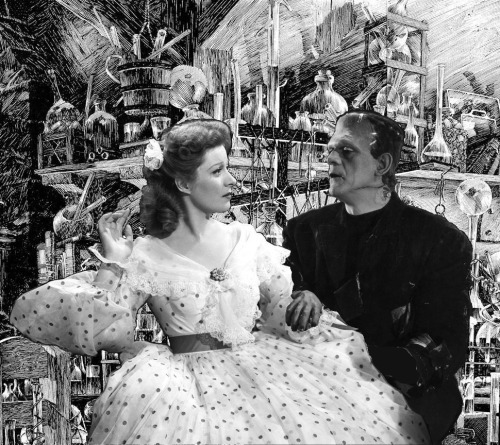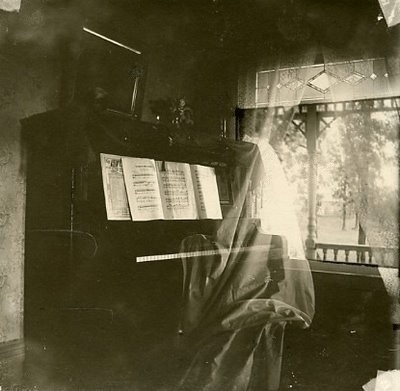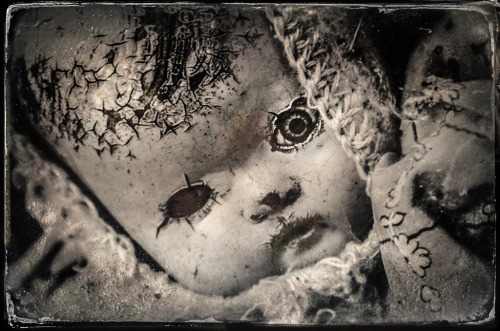I Cannot Emphasize Enough How Much You Need To Read Thoroughly Through The Terms Of Any Publication Before
I cannot emphasize enough how much you need to read thoroughly through the terms of any publication before you send your writing to them. It is mandatory that you know and understand what rights you’re giving away when you’re trying to get published.
Just the other day I was emailed by a relatively new indie journal looking for writers. They made it very clear that they did not pay writers for their work, so I figured I’d probably be passing, but I took a look at their Copyright policy out of curiosity and it was a nightmare. They wanted “non-exclusive, irrevocable, royalty-free, perpetual, worldwide license and right to use, display, reproduce, distribute, and publish the Work on the internet and on or in any medium” (that’s copy and pasted btw) and that was the first of 10 sections on their Copyright agreement page. Yikes. That’s exactly the type of publishing nightmare you don’t want to be trapped in.
Most journals will ask for “First North American Rights” or a variation on “First Rights” which operate under the assumption that all right revert back to you and they only have the right to be the first publishers of the work. That is what you need to be looking for because you do want to retain all the rights to your work.
You want all rights to revert back to you upon publication in case you, say, want to publish it again in the future or use it for a bookmark or post it on your blog, or anything else you might want to do with the writing you worked hard on. Any time a publisher wants more than that, be very suspicious. Anyone who wants to own your work forever and be able to do whatever they want with it without your permission is not to be trusted. Anyone who wants all that and wants you to sign away your right to ever be paid for your work is running a scam.
Protect your writing. It’s not just your intellectual property, it’s also your baby. You worked hard on it. You need to do the extra research to protect yourself so that a scammer (or even a well meaning start up) doesn’t steal you work right from under you nose and make money off of it.
More Posts from Cardinalfandom and Others
So you want to start a podcast: a collection of resources
So @borinquenaqueer requested resources for podcasters, and I started collecting mine and typing up info about them and then it turned into a Whole Thing, so I decided to just make it its own post in case other people also find it helpful. Below the cut, we're gonna cover:
Microphones (what types are out there + personal recommendations)
Recording your show
Editing your show
Audio hosting (what is it + how much does it cost + personal recommendations)
Website hosting (why I recommend having a website + cost + recs)
Music
Cover art
Transcripts
Press kits (what are they + why you might want to have one + how to make one)
Other resources (a collection of articles about podcasting that people might find helpful)
(Quick note: this is all geared towards a general audience, so any “you” in this post should be taken to mean a vague “you, any podcaster reading this” rather than a particular person!)
Microphones
There are two types of microphones commonly used in podcasting: XLR and USB.
XLR microphones connect to an audio interface with an XLR cable; the audio interface then connects to your computer with a USB cable.
USB microphones connect directly to your computer with a USB cable.
Here's a quick rundown of how they compare:
XLR Microphones
Cost: Cost varies depending on what you get, but all of the pieces together will probably come out to around $100 minimum
Audio Quality: Reliably crisp and clear even on the lower end of the budget
Background Noise: Generally good at picking up only your voice and filtering out background noise
Components: You'll need a microphone, mic stand, audio interface, XLR cable, and USB cable
Replacing/Upgrading: While the whole kit and kaboodle will probably come out to around $100, each individual piece can be found in the $20-40 range, which makes them easier to replace if one of them breaks. You can also upgrade your equipment one piece at a time (e.g. I started with a $20 mic and later upgraded to a $100 mic without changing any of my other equipment)
Set-Up: Can take slightly longer to set up, especially when you're just getting used to it. None of the set up is particularly hard (it's really just plugging things into other things and fiddling with knobs), but it can take a few minutes
Portability: Can be taken out of the house if you get a portable audio interface
USB Microphones
Cost: Starts around $25, with most falling in the $50-100 range. Most don’t come with a pop filter, which will cost an extra $5-15 depending on the type you get
Audio Quality: The $25-40 range will probably be a little grainy/poppy, but that’s not a huge deal if you don’t mind that it might cost you some listeners (there are some people who are just picky about what quality of audio they listen to and others who have hearing issues that means they genuinely need high-quality audio to understand anything). You’ll get more reliable audio quality once you hit the $50-100 range
Background Noise: Can pick up a lot of background noise, which can be an issue if you live somewhere with a lot of ambient sounds (like near a highway or in an apartment with a toddler above you)
Components: You just need the microphone and a USB cable, which are generally sold together
Replacing/Upgrading: There’s really just one main component to this set-up (the microphone), so if it breaks, you’ll have to replace your whole set-up. Same with upgrading—if you want to upgrade to a better mic at some point, you’ll probably be looking at replacing your set-up entirely (though this can also be an upside if you’re able to sell your old mic, since that can offset the cost of getting a new one)
Set-Up: Very quick—you just plug in, adjust the knobs, and go
Portability: You can generally only use it if you have a computer to plug it into, so it’s about as portable as your computer happens to be (and, of course, is reliant on your computer’s battery life)
Bonus: Pop Filters
No matter which kind of microphone you use, you’ll probably want a pop filter. There are two kinds: one looks like a piece of very thin fabric stretched over a plastic hoop that’s attached to a long, flexible neck; you attach the neck to either your microphone or the table you’re recording on, then move the screen so it’s between your mouth and the microphone. The other kind looks like a foam ball with a hole cut through one side; you just put it over your microphone. The first kind usually runs around $15, the second around $2-5. You can use either or both, but I highly recommend using at least one.
This is because of plosives. A plosive is a kind of sound you make by stopping your airflow, followed by a sudden release of air—like the p or b sounds in English. When you record yourself saying those sounds (and you’ll be saying them a lot), the microphone picks up the burst of air as a sudden spike in noise, which can be really unpleasant and jarring to listen to. When you use a pop filter, it dampens the burst of air and stops the audio from spiking. If you don’t have the money to buy one, you can find tutorials for making your own online!
Microphone Recommendations
XLR: I started out using a Behringer Ultravoice XM8500 microphone ($25) connected to a Behringer U-Phoria UM2 Audio Interface ($50). After buying cords, a pop filter, and a mic stand, the set-up came out to a bit over $100.
USB: The Blue Yeti is considered somewhat of a gold standard for USB mics in podcasting (I believe Welcome to Night Vale is/was recorded on a Yeti, though I could be wrong). It’s about $100-140 depending on where you buy. For a more budget-friendly option, I know people who have gotten great results from the Blue Snowball, which can be found online for around $45-50.
Tip: Buy Extra Cords
Whatever kind of microphone you buy, I highly recommend getting an extra of each kind of cord you need. Cords have this habit of breaking right before (or in the middle of) recording sessions and that is much easier to deal with if you have an extra on hand!
Resources
30 of the Best Podcast Microphones (For Any Budget)
21 of the Best USB Microphones for Podcasts (That Won’t Break the Bank)
Recording Your Show
To record your show, you’ll need some kind of program on your computer that can record sound. My go-to is Audacity: it’s totally free, has a pretty robust toolset, and is (at least in my opinion) pretty user-friendly. It’s also been around for ages and is super popular, so it’s really easy to find how-to guides online (both general “how do I use this program at all?” and more specific questions like “how do I reduce noise?”). You can also just play around with whatever recording program came pre-installed on your computer.
If you have multiple people on your show and you’re recording together online (e.g. over a Discord call), I extremely extremely recommend having everyone record their audio individually and then stitching them together rather than just recording the call. It’s more work, but it will sound worlds better.
Editing Your Show
So, I have done editing before. I’m not going to pretend I’m particularly skilled at it, and I would feel bad passing on advice that could be bad, so instead I’m gonna skip right to the Resources part of this section and pass you on to people who know more than me.
Resources
Why I Edit Actual Play Podcasts on an iPad
A Massively Oversimplified Guide to Loudness
Podcast Problems: The Love and Fear of Silence
Audacity Tutorial for Podcasters: How to Setup, Record, and Edit a Podcast
That last one is obviously geared specifically towards Audacity, but if you use a different program, just Googling “how to edit a podcast in [program]” can usually get you some great in-depth tutorials.
Audio Hosting
To submit your podcast to podcatchers like Apple/Google Play/Spotify, you need to have an RSS feed. To get an RSS feed, you need to use a hosting service, like Libsyn or Pinecast. Many of these (though not all of them!) cost money, but they can be pretty cheap—I started out using Libsyn, which starts at $5/mo per podcast. As a heads up, at least with the paid services I’m familiar with, you don’t just pay for the service while you’re actively uploading your podcast; you’ll have to keep paying for as long as you want your feed to remain active (meaning that people can still listen to your show).
I currently use Pinecast, which I highly recommend if you’re going to do multiple shows, because you can have multiple shows on the same $10/mo plan (vs services like Libsyn which charge per show).
Resources
The 9 Best Free Podcast Hosting Services in 2022
The 10 Best Podcast Hosting Services (for new & experienced podcasters)
Website Hosting
I extremely recommend having a website. This will provide a handy dandy place for people who interested in your show to find out things like when/where your show releases, who makes it and where they can be found, and how people can contact you. If you have a Patreon/ko-fi/other way for people to pay you, you can also link it here. Same with transcripts. This doesn’t have to be anything fancy or even cost you any money—I’ve seen great websites that are just based on Tumblr or Carrd, which you can make totally for free.
Here are some examples of podcasting websites on a variety of different platforms:
Re: Dracula (Tumblr, free—I believe they do have another website, but this is a great example of a Tumblr blog for a podcast)
Starlight Audio Productions (Squarespace, $17/mo—this one is mine!)
Sidequesting (Carrd, free—though I believe you have to pay extra for a custom domain, like this website has)
Hug House Productions (Wordpress, which has a range of costs starting around $4/mo; this particular website plan is $25/mo, which allows them to have a store on their site)
Zebulon Podcasts (Wix, free—though you can pay money to remove the banner at the top and get a custom domain)
You may also consider getting a custom domain name, which is how the Starlight Audio website is starlightaudio.com instead of starlightaudio.squarespace.com. You can hook a custom domain up to a lot of different website builders, including Tumblr blogs, though some of them (like Wix) will charge extra for it. Custom domain names do cost money, though usually not a ton—I pay $10/year for the Starlight Audio domain and Hug House pays $20/year for theirs (thank you to Anne at Hug House for answering my questions!).
Music
For music, you have a few options:
Find music online that’s free to use—just make sure that it’s free to use, not just free to download; and if you plan on running ads at any point, make sure that it’s free to use for commercial rather than personal use. My old queer history podcast (RIP) used a Jonathan Coulton song because he, bless him, releases his music for free non-commercial use with attribution
Find music you like from an independent artist and ask their permission to use it—not every artist will let you use their stuff for free, but many will, especially if you credit them in every episode
Commission an artist to make a custom song for you—this will have a huge range of costs depending on who you get and how much they charge; in my experience it’ll usually be in the $100-400 range. If you plan on having ads on your show, make sure that the artist knows that and is okay with it!
If you’re a composer, you can also make your own song and use it however the heck you want. You make the rules now.
Whatever you do, I do recommend having some kind of opening music, because it’s a great way to set the tone for your show and make it more distinctive (think about how the light, bouncy Parks & Recreation theme song sets up the show as a lighthearted comedy while the dark, eerie Hannibal theme song sets up the show as a bloody horror show). If you can’t afford to pay any money for your opening song, that’s totally fine—you can find tons of music online that’s free to use and will sound great!
Resources
Where to Get Music for Podcasts Free of Royalty Issues
Cover Art
We’ve got two main options here:
Do it yourself. I tend to make my covers in Photoshop, but Canva is a very popular and user-friendly option. Canva is free to use and has tons of free assets available, though you can also pay $10/mo to have an expanded asset catalog. There are also tons of free tutorials on Youtube for how to make good art in Canva!
Commission someone to make it for you. Cost for this will vary wildly depending on who you go with (anywhere from $50-400 or more), and will also vary according to whether you plan to sell merch with your show art on it (if you plan on making a profit from it, you’ll probably need to pay more to the artist you commission it from, though some will also be open to you paying less upfront if you give them a cut of merchandise profits)
Resources
The Sound Barrier: Does Cover Art Matter?
Canva podcast templates
Fiverr and Upwork (websites for hiring freelancers)
Transcripts
Transcripts can be used to make your podcast accessible to deaf and hard-of-hearing people, like me! I’m not going to spend tons of time in this post going into why you should have podcasts and how to edit/host/format them—I’ve already written a pretty extensive article that covers those things, which I’ll link under Resources below.
However, that article is geared mostly towards turning recording scripts for fiction podcasts into transcripts, which is a bit of a different process than getting transcripts for an unscripted show. If your show is unscripted and you want to provide transcripts, there are three main ways to do it:
Hire a transcriber. You can find transcribers on Fiverr and Upwork (linked above). Usual rates are around $0.30-2.00 per minute of audio
Transcribe it yourself. This is a huge amount of work and I don’t really recommend it if you’re not an experienced transcriber with a bunch of time on your hands. Instead, if you can’t afford someone to transcribe your show from scratch, try…
Generating an auto-transcript using a service like Otter.ai. This can be a great budget option if you can’t afford a transcriber. However, if you do this, please edit your transcripts. You know how Youtube autocaptions are infamously bad? Services like Otter have come a long way, but they’re still going to have those same issues. Most of them also only reference English dictionaries and will massively fuck up non-English words and names. Please edit your transcript to make sure it’s actually accurate
A lot of people will say that you absolutely have to have a transcript for your show—that if you don't, you're Evil and Personally Hate Accessibility. I actually disagree with that, because at the end of the day, having transcripts does take require either time or money, and I know a lot of podcasters just don’t have either of those. But if you’re able to have transcripts, it means your podcast is accessible to deaf and hard-of-hearing people (as well as people with audio processing issues), which is a really kind thing to do and helps make the world a more accessible place.
Resources
How to Make Your Podcast More Accessible Using Transcripts (written by me!)
I don’t currently know of any how-to guides for editing auto transcripts, but I’m asking around and will update if I find one
Press Kits
A press kit is essentially a handy little packet that people can view or download that includes a bunch of info about your show all in one easily-accessible place—think things like your cast/crew, what your show is about, how it started, when and how to listen to it, your cover art, that kind of thing. It’s called a “press kit” because it’s most commonly used by journalists (press) to make it easier for us to write about your show. This isn’t a requirement to have a podcast or anything, but it makes it easier for people to give your show free publicity, which is a very useful thing!
Here are some examples of podcast press kits:
Love and Luck (Squarespace)
Twilight Over Midgard (Squarespace, with a bit of a different format—this is my upcoming show)
Sidequesting (Carrd)
VALENCE (Wordpress)
Zebulon Podcasts (Wix; click on “Menu” then “Press Kit”)
I can’t explain how to make a press kit better than my friend Elena Fernández Collins already has, so I’ll just link that below—give it a look!
Resources
Press Play on a Podcast Press Kit
Other Resources
Finally, here are some general podcasting resources that didn’t fit into any of the above categories:
Discover Pods (disclaimer: I used to write for them)
How To Start A Podcast The Right Way (The Definitive Complete Guide for 2022)
Podcaster Resources
Simplecast blog (disclaimer: I currently write for them)
Less is More: Refining the Scope of your Audio Drama
How to Tumblr as a Fiction Podcaster
“As You Know, Bob…”: Creating Natural-Sounding Dialogue in Audio
Bello Collective
The blogs of Wil Williams and Elena Fernández Collins and the “Podcasting Resources” page of Tal Minear (disclaimer: I’m friends with these people, but I do genuinely think their writing is great and I’d be recommending it even if I didn’t love them as people)
I’ve also written several articles on podcasting; here’s links to a few of my favorites
I Have a Podcast—Now What the Heck Do I Call It?
Avoiding Podcasting Burnout When Your Love Your Work
Writing Mentally Ill Characters in Horror (Without the Ableism)
Thanks for reading this massive post! I hope at least a few people find it helpful. If you liked this post, reblogs are super appreciated. If you like how I write, you can find more in my writing portfolio and on the blog on my website, where I’m currently chronicling my journey trying to get a book published.
If anyone has questions, feel free to ask and I’ll respond as best as I can!










Index of Frightful Friday Posts 101–200
Young Goodman Brown | Nathaniel Hawthorne
The Devil and Daniel Webster | Washington Irving
The Cigarette Case | Oliver Onions
The Readjustment | Mary Austin
No. 5 Branch Line: The Engineer | Amelia Edwards
The Easter Egg | Saki
The Lottery | Shirley Jackson
The Secret of Kralitz | Henry Knutter
Mother of Toads | Clark Ashton Smith
Old Garfield’s Heart | Robert E. Howard
The Outsider | H.P. Lovecraft
The Ghosts | Lord Dunsany
The Man-Eating Tree | Phil Robinson
The Reckoning | Lafcadio Hearn
Wild Swimming | Elodie Harper
Neighbourhood Watch | Greg Egan
The Bus-Conductor | E.F. Benson
The Nightmare Room | Arthur Conan Doyle
The Devil of the Marsh | H.B. Marriott-Watson
Weeds | Stephen King
Djinn and Bitters | Harold Lawlor
A Night of Horror | Dick Donovan (aka James Edward Preston Muddock)
Leiningen Versus the Ants | Carl Stephenson
The Vampire of Croglin Grange | Augustus Hare
Lost Hearts | M.R. James
Round the Fire | Catherine Crowe
The Music of Erich Zann | H.P. Lovecraft
Sir Dominick’s Bargain | J. Sheridan Le Fanu
Pigeons from Hell | Robert E. Howard
The Medici Boots | Pearl Norton Swet
The Toll-House | W.W. Jacobs
Pride & Prometheus | John Kessel
The Shadowy Third | Ellen Glasgow
Was It a Dream? | Guy de Maupassant
The Open Door | Margaret Oliphant
Three Skeleton Key | George G. Toudouze
Man-Size in Marble | Edith Nesbit
Silent Snow, Secret Snow | Conrad Aiken
A Sound of Thunder | Ray Bradbury
The Gateway of the Monster | William Hope Hodgson
Ofodile | Chimamanda Ngozi Adichie
Repossession | Lionel Shriver
Light and Space | Ned Beauman
Stairs | Penelope Lively
Dark Christmas | Jeanette Winterson
How Fear Departed the Long Gallery | E.F. Benson
Thurnley Abbey | Perceval Landon
To Be Read at Dusk | Charles Dickens
The Tractate Middoth | M.R. James
The Truth, The Whole Truth, And Nothing But The Truth | Rhoda Broughton
Lost in a Pyramid, or the Mummy’s Curse | Louisa May Alcott
The Sumach | Ulrich Dabney
The Pavilion | Edith Nesbit
The Flowering of the Strange Orchid | H.G. Wells
At the Dip of the Road | Mary Louisa Molesworth
At Chrighton Abbey | Mary Elizabeth Braddon
Banshees and Warnings | Lady Gregory
At the End of the Corridor | Evangeline Walton
The Tree’s Wife | Mary Elizabeth Counselman
Pickman’s Model | H.P. Lovecraft
The Dead Man | Fritz Leiber
The Canal | Everil Worrell
The Return of the Sorcerer | Clark Ashton Smith
The Child That Went with the Fairies | J. Sheridan Le Fanu
The Piano Next Door | Elia W. Peattie
The Miniature | J.Y. Akerman
The American’s Tale | Arthur Conan Doyle
The Death’s Head | Friedrich Laun
The Spectre-Barber | Johann Karl August Musäus
The Family Portraits | Johann August Apel
The Storm | Sarah Elizabeth Utterson
The Invisible Girl | Mary Shelley
The Botathen Ghost | R.S. Hawker
The Whisperers | Algernon Blackwood
The Curse of Vasartas | Eva Henry
The Lost Door | Dorothy Quick
Canon Alberic’s Scrapbook | M.R. James
The Mysterious Mummy | Sax Rohmer
Dagon | H.P. Lovecraft
Strange Event in the Life of Schalken the Painter | J. Sheridan Le Fanu
The Poor Ghost | Christina Rossetti
The Night Wire | H.F. Arnold
Old Aeson | Arthur Quiller-Couch
The Feather Pillow | Horacio Quiroga
Fingers of a Hand | H.D. Everett
The Tale of Satampra Zeiros | Clark Ashton Smith
The Story of Baelbrow | Kate & Hesketh Prichard
The Jelly-Fish | David H. Keller
The Ebony Frame | Edith Nesbit
The Man of Science | Jerome K. Jerome
The Open Window | Saki
The Hall Bedroom | Mary Wilkins Freeman
No. 252 Rue M. le Prince | Ralph Adams Cram
The Weird Violin | Anonymous
The Ghost’s Summons | Ada Buisson
The Doll’s Ghost | F. Marion Crawford
The Canterville Ghost | Oscar Wilde
The Tapestried Chamber | Sir Walter Scott
The Gorgon’s Head | Edith Bacon
The Empty House | Algernon Blackwood
For the first one hundred stories, please visit: Index of Frightful Friday Posts 1–100
Wirt's Inferno/Dante's Unknown: Allusions to the Divine Comedy in Over the Garden Wall
Introduction

I must stress that the parallels I draw between Over the Garden Wall and Dante’s Inferno are rather broad as they study the overall themes of the latter in comparison to the occurrences in the former. In my defense, the work that chartered what many consider to be the definitive version of Hell, while undoubtedly a monumental and well-constructed masterpiece of literature, contains several understandable prejudices of the author that are not reflected in the cartoon proper. The primordial spirit of the circles however, the fundamental vices that make the Divine Comedy resonate even centuries later, are incorporated into the narrative as are the broad strokes of Dante’s strange journey through the afterlife.
The Travelers
Wirt

Wirt, like Dante, is a poet and shares several traits with the Italian soldier and occasional politician. One of the most obvious of these besides his enjoyment of prose is his infatuation with a girl he finds to be truly exceptional, Sara. Like Dante, he seems content to appreciate her from afar and like Dante’s Beatrice, Sara inspires Wirt to create art in his poetry and clarinet mixtape. However, this distance he places between him and her is shown to be a source of great unhappiness, and while he does go on a fantastic adventure in the vein of “courtly love” (a concept Dante lionized) that inexplicably gives him an opportunity to tell her his feelings, it’s made clear that just talking with her would’ve saved him a lot of trouble.
Pride is another quality that Wirt and Dante share. Despite his lack of self-esteem, Wirt tries to, with mixed success, lord over the one person he is confident and cruel enough to impose upon: Greg, who he believes to be an immature imbecile. I must call to your attention that a surefire way to be sent to the Inferno is to be in denial of your own wrongdoings. Wirt is the principle reason that he and Greg wound up in the Unknown, but his insistence that he is guiltless and that Greg is at fault is strongly implied to be the major obstacle preventing them from leaving it.
Then there are the realms themselves. Though one of the most popular visions of the Judeo-Christian underworld, Dante’s Inferno was a very personal invention and reflected a multitude of the author’s own interests and beliefs. Similarly, it’s heavily implied in the ninth chapter that the Unknown was constructed out of Wirt’s (and some of Greg’s) experiences and hobbies. Both poets likewise find themselves frequently bemused in their quests, despite the strange lands they are stranded in containing a multitude of things they are familiar with.
On a bittersweet note, Wirt has one immense difference that sets him apart from Dante: Wirt actually succeeded in returning home while Dante spent his later years exiled from his beloved Florence, lamenting his separation from his birthplace.
Beatrice

While the creative talents behind the program have confirmed that Beatrice was named after Dante’s muse and guide in Paradiso, the Beatrice of Over the Garden Wall spends most of the story being the antithesis of her namesake; discouraging what she considers to be frivolous flights of fancy and spending half of the miniseries leading the brothers to ruination rather than salvation. After undergoing a personal journey of her own, her behavior becomes more in line with Dante’s lost love, saving Wirt and even accompanying him during the last part of his eerie pilgrimage.
Greg

Wirt’s Virgil. While more spontaneous and prone to distraction, Greg is something of a poet himself, composing several uplifting songs over the course of the chapters in contrast to his brother’s defeatist lamentations. These improvised tunes being beloved by others and Wirt’s eloquent moanings being ignored (by Greg) or mocked (by Wirt himself) allude to how Virgil and Dante’s poems were regarded during the Divine Comedy respectively. Greg may not have a working knowledge of the Unknown, but his courage and curiosity place him in a better position to engage and resolve the trials the pair face, making him an unorthodox guide to his older and craven sibling. As it was with Virgil, Greg is incapacitated during the final leg of the journey, and Wirt must solve the mystery of the Unknown without him.
The Entrance: Abandon all hope, ye who enter here

Dante’s quest begins in a forest. In Wirt and Greg’s case, that’s true in more ways than one. As our Narrator kindly reminds us, the Unknown can be entered by those “who travel through the wood”. This applies to the part of the Unknown they find themselves in initially and the near death experience they shared after almost drowning in a wooded area.
Echoing Dante’s opening plight, Wirt and Greg are pursued by a savage monster. Though Greg’s quick thinking saves their lives, mirroring Virgil’s rescue of Dante from the three beasts chasing him, the altercation destroys the safe haven of the mill, forcing the two of them to travel deeper into the Unknown. Before they go, the Woodsman warns them that the surrounding woods are the home of the Beast, “the death of hope”. However, defying the famous epithet that marks the entrance to the Inferno, he later clarifies that losing hope is about the last thing you want to do in the Unknown as it puts you squarely in the Beast’s clutches.
The First Level: Limbo

Pottsfield is not Limbo itself as the Unknown fits that description better, but it embodies the dilemma that is usually presented to characters that realize they are in Limbo: stay here and be at peace or struggle further in the hopes that you will return home. The passive Wirt is momentarily seduced to choose the first option by how simple and quiet “life” there is and him changing his mind is done more out of being disturbed by the town’s macabre disposition than any real strength of will on his part. Fittingly, as is the fate of those that move past this relatively idyllic portion of hades for deeper zones, this arguably puts him in even greater danger.
Note: The town gets its namesake from a “Potter’s Field”, a type of gravesite for unknown corpses. Conversely, the denizens of Pottsfield all seem to have names, perhaps having regained the identities “lost” during their burial.
The Second Level: Lust

Miss Langtree’s fixation over Jimmy Brown’s supposed infidelity renders her unable to teach. This subsequently renders the sacrifices of her father to keep the school open moot, who in turn accuses Jimmy Brown of “gallivanting”. The two of them are not necessarily bad people, but much like Wirt, they’re too busy moaning about their troubles to fix them. This is made more evident by how Jimmy wasn’t up to any sort of debauchery and was merely working hard to consummate his love for Miss Langtree in the proper fashion. Therefore lust in practice is not the debilitating force here, but the obsession over it.
The Third Level: Gluttony

The patrons and staff of the tavern are people of purpose. Each has their role, their profession, and thus an identity to call their own. All are welcome, even thieves and killers. There is however, one major exception: The Beast. Despite having a “job” of his own and a great singing voice, he is feared and reviled all the same. The innkeeper implies that this is due in part to how the beast lies to get what he wants, in contrast to an “honest” scoundrel like the Highwayman.
There is also the fact that, unbeknownst to those who fear him, the Beast doesn’t actually “work with his hands” and instead tricks people into acting as his proxies. The metamorphosis into an Edelwood tree, might not even be his own doing. It could just be something that happens to those that fall to despair in the Unknown, a quirk of the land that he exploits so he can keep his lantern fed and even that might be a cruel indulgence. He is not a tradesman, foul or not, he is a parasite. To summarize, the Beast and his lantern are entities of excess as they do not truly earn what they so gratuitously consume.
Note: Something else worth mentioning is how Greg keeps bringing food to his and Wirt’s table to satiate his hunger, but no one, not even his Frog, is ever shown eating any of it.
The Fourth Level: Greed

Quincy Endicott is dead. The tombstone in the Eternal Garden cemetery all but proves that. Thus his and Marguerrite Grey’s fear of one another is simultaneously justified and absurd. Fair enough, but the core theme of this episode doesn’t lie in a Sixth Sense-esque twist, but in the insatiable sinkhole of greed. Quincy is rather frank (while stepping on franks) that his entire life was/has been dedicated to the accumulation of money. He is also quick to tell us that these riches have gone into making his home bigger and in turn, more hollow. Consequently, the tea tycoon is made to feel small and alone in his own house, unable to derive joy from making money as he confesses to despising the beverage he peddles: Indeed, he all but states that he’s done reprehensible things to amass his fortune. He has no one to talk to apart from his peacocks as his estate is devoid of any staff; only opulent furniture keeps him company indoors. The mansion itself is apparently turning on him as well, coming into the possession of new rooms and wings that he can’t recall commissioning that make him feel more lost and confused than ever. There is a glimmer of beauty and hope in this increasingly alien environment when he chances upon a portrait of a beautiful woman, and then things get even worse for him until his “nephews” bail him out.
The punishment of this circle for those who lived their lives with avarice in their hearts is an eternal jousting match where they are put on one of two sides and “joust” with one another using massive weights. This is expressed in how despite living in the same building, Quincy and Marguerrite have spent an undefined amount of time barely missing one another; locked in a frustrated and chaste dance with no end in sight. For as far as the two of them are concerned, to confront one another directly only has two awful outcomes: the ghost is real, making their love unfeasible or there is no ghost, which would mean that the two of them have gone mad. A line shared by the star-crossed aristocrats when they recognize one another’s names proves that this is all an immense allusion to their situation before they died. They had never met, nor knew what the other looked like. What they did know was that the opposite party was their “business competitor”, a reprehensible entity that dared to get in the way of them gaining a monopoly on tea, a scoundrel that hampered the accumulation of personal wealth. How could they have known that the cure for their loneliness lay in the arms of their respective rivals? And so it was that these two nobles would spend their hereafters haunted by the specter of the love and happiness they deprived themselves of during their mortal existences; architects of a gilded mausoleum. Thankfully, Wirt and Greg help overturn this bedlam and a happy conclusion is reached for Endicott and Grey, who manage to put aside the past animosity that kept them apart while they still had pulses.
Fred is also a creature of greed, a literal horse thief who despite his lack of hands has apparently stolen a great many things before meeting our protagonists. Once he is confronted by the possibility that his kleptomania might get him killed, he swears that he will cease his wrongful purloining and get an honest job. True to his word, he elects to stay behind with Quincy and Grey as “an official tea horse.” In a moment that is up for debate and interpretation, the epilogue has a scene where Marguerrite is staring at a portrait of Quincy and Fred. If this was painted before she and Quincy properly met, mirroring how Quincy fell in love with her image in the painting, then Fred might very well have been Endicott’s steed when they were both alive, adding a sense of irony to the horse unwittingly trying to steal from his former master.
The Fifth Level: Anger and Sorrow

While this circle is primarily associated with Anger, the sullen are punished here as well. They are cursed to eternally drown in the waters of the River Styx, where there is no hope of salvation or joy with the frogs sinking into the mud acting as a visual representation of this. Though the brothers begin the episode with much optimism and mirth, the discovery that their entire quest was a farce causes Wirt’s spirits to sink, dragged down by the betrayal of someone he considered to be his friend. Wirt, as we are soon to find out, doesn’t have many friends. Worse, he is without a guide, and he and Greg are rendered more lost than ever before with no clear goal to work towards.
Anger is expressed in the simple, but understated act of Wirt stealing Adelaide’s scissors, despite having no real use for them himself past cutting the strings, in order to punish Beatrice for deceiving him and Greg.
Note: I would be remiss not to mention the various references to the afterlife in the voyage itself that others have noted in the past. The ferry is Charon’s boat of course, and the two cents acting as the two coins that the morbid boatman usually accepts as his fare. The frogs hibernating in the mud could also be called them taking a “dirt nap”, a colloquialism for being dead and buried.
The Sixth Level: Heresy

Witches and evil spirits are the obvious embodiments of the circle’s theme of heresy, but this episode also has the power of doctrine as a central theme. After all, what is a heretical action without a coda to rebel against? The bell’s hold over Lorna and the Evil Spirit represents the power of instruction. Rules and laws have the capacity to oppress and protect, to enslave or liberate. Auntie Whispers feared Lorna leaving her once she was cured and used the bell to forcefully keep her niece at her side by restraining the spirit, but not exorcising it. Greg had the gumption to use the bell against Lorna, but was too callow to understand how to use it properly. Ultimately it is Wirt, the one usually wracked with indecision and uncertainty that realizes what must be done and does what Whispers was too selfish (and Greg too ignorant) to do.
The Beast is shown to use a doctrine of his own to manipulate the Woodsman. Simple rules: keep the lantern lit and your daughter “lives”. When the Woodsman wonders if there is “a better way”, the Beast is adamant that his word is law and his methods absolute. He is lying of course, but by himself, how can the Woodsman hope to see past the only options presented to him?
The Seventh Level: Violence

A small scale war is waged between the People of Cloud City and the frightfully destructive North Wind. The elemental eventually comes into direct conflict with Greg and the climax of the episode is a battle on two fronts as the blustering bruiser attempts to trounce Greg in his sleep and freeze him outside of it. The boy triumphs with his usual mixture of audaciousness and creativity; of course you can beat a raging storm by stuffing it into a bottle!
Prominent features of this level of the Inferno include a treacherous river located in the outer ring (as represented by the one Wirt and Greg travel on during the chapter’s start, and the one Wirt falls into at its end) and a terrible storm in the inner ring (The North Wind). The middle is what’s most interesting to people that are familiar with both the Divine Comedy and Over the Garden Wall as it is filled with grotesque trees made from the bodies of those that committed suicide, individuals that gave up on living and surrendered to self-destruction. Wirt is rescued from this terrible (and self-inflicted) transformation by Greg’s sacrifice, but the connection remains rather poignant as it helps build on the idea that the Unknown is a place between life and death.
The Eighth Level: Fraud

Halloween is a day of the dead and a day of disguise. It is a night of imposters and make-believe. What better time to play out the themes of fraud than this? Paradoxically, it is also where a great many truths are revealed alongside a showcase of the many lies that Wirt has invented to exonerate himself from his own cowardice. Among the things we learn is that Wirt and Greg are two American children from the late 20th century, the Garden Wall that the show’s title alludes to was that of a cemetery (named “Eternal Garden”), and that Jason Funderberker isn’t the stud Wirt whines about him being.
Perhaps the greatest display of this episode’s themes lies in Greg and Wirt’s apparel. Greg explains that he wears a tea kettle on his head because he’s pretending to be an elephant. It’s a simple and abstract costume, but one with purpose. Then there’s Wirt’s more elaborate ensemble. When asked what he’s dressed as, Wirt can’t answer the question. He has no idea. The montage of him assembling its components might’ve given him a burst of confidence, but it is ousted as having been utterly nonsensical. That is not to say that Wirt is not masquerading as something. It’s just that he’s disguised as someone who’s wearing a costume: a charlatan’s charlatan.
Counterfeiters and hypocrites rate high (or low, depending on how you look at it) on this plane, and Wirt’s a little bit of both. He wants someone to lead the way and be brave for him, but resents Greg’s aid. His carelessness is what loses him the tape in the first place, which he blames Greg for. Wirt also mistakes his brother’s initiative for recklessness and kneecaps whatever progress Greg’s actions might’ve netted him. Finally, he creates an obtuse narrative that frames Greg and his stepfather as saboteurs due to their insistence that he join marching band. Had he listened, the act might’ve brought him closer to Sara, who he considers lost to him now due to the imagined sabotage. Through reflection, Wirt realizes this and against his usual cowardice, heads out into a brutal blizzard in hopes of saving the brother he disowned and practically drowned.
The Ninth Level: Treachery

As with any circle, this one closes where it began. It is a chapter of resolution, but also of return. The final act of the production is set in the woods surrounding the Old Grist Mill, the primary location of the first chapter’s happenings now repaired. It is winter, and even those who only have a broad knowledge of Dante’s Inferno know that while the upper levels of that dismal pit may be rife with fire and brimstone, the very bottom is deathly cold.
The Beast is decked out in satanic narrative and visual trappings from across the centuries: the horns, the name, the association with darkness and witchcraft, the predilection for making deals with the desperate and the gullible, and a monstrous reputation that’s justified by the evil he masterminds and commits. He fools his victims into committing worthless and futile acts that serve no higher purpose outside of his personal benefit. Above all else, he is treacherous, a trait that is made distinct from fraud by how it is a betrayal of a more intimate sort. In insincere defiance of his fearsome reputation, he tries to pass himself off as helpful and altruistic; telling the Woodsman, Greg, and Wirt that he’ll help them out if they perform some simple, but essentially idiotic tasks for an indefinite (read: forever) amount of time. Fittingly, it’s Wirt, whose character arc has him learning to stop being a pushover and take responsibility for himself, who sees through the passive-aggressive charade and puts the villain into a corner.
We are given a brief flash of the Beast’s actual appearance, a horrific mass of flesh made up of dozens of anguished faces. His many mouths were a conscious design choice by the creative team to incite feelings of trypophobia (a fear of holes) in viewers with that brief glance, but they’re also symbolic of the circular nature of the Beast. A shadow cannot exist without light; his existence depends on keeping the lantern lit, but he can’t carry it around himself because doing so would reveal to all those he approached that the infamous Beast is nothing more than an abomination built from weakness, a wretch. The Devil of Dante’s Inferno was a fiend with multiple mouths that was comparatively imprisoned by his own wickedness. Over the Garden Wall is rife with characters that are trapped or feel they are trapped (Wirt, Greg, Jimmy Brown, the Langtrees, Quincy, Lorna, etc.), so it’s only fitting that the show’s antagonist is in an inescapable predicament of his own.
The ending of the first part of the Divine Comedy has Dante and Virgil escape Hell by climbing deeper into the earth using Satan’s body. In time, they pass right through the center of the planet and come out the other end. By going down, they eventually came right back up elsewhere. Such is the case with our protagonists as the Beast’s vanquishing facilitates a great many escapes and returns. Wirt returns to consciousness in the water and saves both himself and Greg from drowning; Beatrice, after unintentionally proving her nobility to Wirt, returns to her family with the scissors that will cure them all; the Woodsman reluctantly returns home and to his joy, discovers he was grossly deceived; we get an epilogue of sorts that shows us the secondary characters in states mirroring the ones they were in during the prologue, but mostly altered for the better; and the program ends as it began with the piano playing frog, who reveals (as hinted in the sixth chapter) that he was the narrator all along and might’ve made the whole thing up.
videos i find myself frequently rewatching (most of these are film/television related, with some random topics and serotonin perks thrown in here and there)
how andrew wyeth made a painting
why miyazaki is a true romantic
over the garden wall: why is the unknown so familiar?
ginger rogers, katharine hepburn, and the 1941 oscars
the bisexual anti-fascist (marlene dietrich)
missed calls: a eulogy for the movie phone booth
edvard munch: what a cigarette means
parasite vs sunset boulevard: the disillusionment arc
anatomy of anatomy of a murder
saul bass’s movie posters
we’re all stupid and boring
the outsider’s guide to the social world
over the garden wall’s historical clothing inspirations
the psychology of heroism
comedy dies slow: the marvelous mrs. maisel
late night tv needs to change
the man from u.n.c.l.e (2015): style vs substance
when shakespeare got cool
the weird ways to adapt mary jane
aaliyah, britney, & the apathy of lifetime biopics
why chad and ryan switched clothes in high school musical 2
why megamind is a subversive masterpiece
school of rock’s perfect scene
the movies that inspired knives out
can 4 average people beat a pro crossword puzzler?
how david fincher uses pop music
the beach party genre
how to bring folklore to life
is the lonely genius real?
in defense of love at first sight
forming real human connections? sounds fake but ok
If she's your girl then why am I named as the sole heir in her will?
My writing tips
Sharing advice I found the most helpful from researching and reading that worked the best for me while writing.
How to write the first chapter
When you are stuck in your writing
How to find the right title
How to build a magic system
Dystopia vs post-apocalyptic fiction
Young adult vs new adult
How to find new writing ideas
Scene, story plan and plot
Tips on writing multiple protagonists
How to add meaning to your story
How to make a plot out of theme
Friends to lovers development
Sport stories
What makes a story
Developing a story
Types of enemies to lovers
Tips on writing the first page
Internal value of writing
Character building questions
Time passing in writing
Publishing and marketing discussion
How to pick the MBTI for your character
Key to binge-worthy stories
Why coax the story out of your head
How to coax the story out of your head
How to measure your story
Successful (online) friendships
Types of intelligence for OCs
Feel free to ask me anything about writing! My askbox is always open and I love talking about anything writing related :D
OK Tumblr Geriatric Ward, let’s talk about your posture-

there are things you should be doing now to prevent yourself from starting to look like 🥀
Why does it matter? Future you would like to avoid the pain, limited motion, and fall risk that goes along with worsening posture.
What’s the focus?
1. Keep the flexibility in your spine
2. Stretch the muscles in the front
3. Strengthen the muscle in the back
Here are some simple things you can do daily while sitting and when you get up to go into the bathroom or the kitchen
Keep the flexibility by doing these repeated movements: 10 repetitions several times a day

The goal is to give yourself a double or triple chin. Keep your nose pointing forward, don’t let it tip up or down

Thoracic extension- use a chair with a seat back that comes up to the level of your shoulder blades. Try to bend back over the top of the chair without arching away from the seat back and without extending your neck. If the pressure from the top of the chair is uncomfortable you can place a towel there
Stretch the muscles in the front by using a door frame. This one will feel good afterwards

If this isn’t enough of a stretch you can do one side at a time. If you have the right arm up step forward with the right foot and turn slightly to the left. Then do it on the other side.

Strengthen the muscles in the back by squeezing your shoulder blades together for a count of 10 and then repeating 10 times. You can do this several times a day Hint: Don’t lift your shoulder blades up


There are lots more exercises for strengthening your back muscles but this is a good starting point and easy to do. I like doing it while driving
Tips:
Do the best you can
If it hurts stop
Envision future you saying thank you each time you do one of the exercises










maya angelou in a 2010 facebook post / lori preusch - one thousand stories high, 2016 / vintage library card from the public library of toronto / ta-nehisi coates, between the world and me / matilda (1996) / two pictures from “why our future depends on libraries, reading and daydreaming”, a 2018 photo essay with words by neil gaiman & art by chris riddell / caitlin moran, moranthology / istanbul modern library, turkey / tianjin binhai library, china / real biblioteca del monastario de el escorial, spain / jean-paul sartre, the words / lemony snicket, horseradish / ekua holmes - girl - literature, 2015
i was made for the library


-
 coldcanadianwinters liked this · 5 days ago
coldcanadianwinters liked this · 5 days ago -
 dreamycastaway reblogged this · 6 days ago
dreamycastaway reblogged this · 6 days ago -
 eternalparadisearchive reblogged this · 1 week ago
eternalparadisearchive reblogged this · 1 week ago -
 thenavajovalleyhandler liked this · 1 week ago
thenavajovalleyhandler liked this · 1 week ago -
 americasfineasscaptain reblogged this · 2 weeks ago
americasfineasscaptain reblogged this · 2 weeks ago -
 2cornelia4 liked this · 3 weeks ago
2cornelia4 liked this · 3 weeks ago -
 comingupwurlsisnotmything reblogged this · 3 weeks ago
comingupwurlsisnotmything reblogged this · 3 weeks ago -
 newdawnhorizon reblogged this · 3 weeks ago
newdawnhorizon reblogged this · 3 weeks ago -
 watertankafternoon liked this · 1 month ago
watertankafternoon liked this · 1 month ago -
 eisthenameofme reblogged this · 1 month ago
eisthenameofme reblogged this · 1 month ago -
 newgraywolf reblogged this · 1 month ago
newgraywolf reblogged this · 1 month ago -
 megaana135 liked this · 1 month ago
megaana135 liked this · 1 month ago -
 seanhagen reblogged this · 1 month ago
seanhagen reblogged this · 1 month ago -
 vvalrus21 liked this · 1 month ago
vvalrus21 liked this · 1 month ago -
 deeplywornletters reblogged this · 1 month ago
deeplywornletters reblogged this · 1 month ago -
 the-purple-kobold reblogged this · 1 month ago
the-purple-kobold reblogged this · 1 month ago -
 thaliaisalesbian reblogged this · 1 month ago
thaliaisalesbian reblogged this · 1 month ago -
 ami-nami-namino reblogged this · 1 month ago
ami-nami-namino reblogged this · 1 month ago -
 bi-cycle2ryders reblogged this · 1 month ago
bi-cycle2ryders reblogged this · 1 month ago -
 abisexualsylveon reblogged this · 1 month ago
abisexualsylveon reblogged this · 1 month ago -
 abisexualsylveon liked this · 1 month ago
abisexualsylveon liked this · 1 month ago -
 knight-awakens liked this · 2 months ago
knight-awakens liked this · 2 months ago -
 stainedglasswords reblogged this · 2 months ago
stainedglasswords reblogged this · 2 months ago -
 eggletine reblogged this · 2 months ago
eggletine reblogged this · 2 months ago -
 stevejones313 reblogged this · 2 months ago
stevejones313 reblogged this · 2 months ago -
 stevejones313 liked this · 2 months ago
stevejones313 liked this · 2 months ago -
 deadlycalamity reblogged this · 2 months ago
deadlycalamity reblogged this · 2 months ago -
 deadlycalamity liked this · 2 months ago
deadlycalamity liked this · 2 months ago -
 therealrebehm liked this · 2 months ago
therealrebehm liked this · 2 months ago -
 purplecowbell reblogged this · 2 months ago
purplecowbell reblogged this · 2 months ago -
 purplecowbell liked this · 2 months ago
purplecowbell liked this · 2 months ago -
 braininatankwithalaptop reblogged this · 2 months ago
braininatankwithalaptop reblogged this · 2 months ago -
 braininatankwithalaptop liked this · 2 months ago
braininatankwithalaptop liked this · 2 months ago -
 uberguber89 reblogged this · 2 months ago
uberguber89 reblogged this · 2 months ago -
 magpierhymes liked this · 2 months ago
magpierhymes liked this · 2 months ago -
 axylolo reblogged this · 2 months ago
axylolo reblogged this · 2 months ago -
 axylolo liked this · 2 months ago
axylolo liked this · 2 months ago -
 tjwock reblogged this · 2 months ago
tjwock reblogged this · 2 months ago -
 adreamngofdragons reblogged this · 2 months ago
adreamngofdragons reblogged this · 2 months ago -
 saywhatnow99 liked this · 2 months ago
saywhatnow99 liked this · 2 months ago -
 starlantern reblogged this · 2 months ago
starlantern reblogged this · 2 months ago -
 narutomaki reblogged this · 2 months ago
narutomaki reblogged this · 2 months ago -
 baronessofmischief liked this · 2 months ago
baronessofmischief liked this · 2 months ago -
 adorable-bookworm liked this · 2 months ago
adorable-bookworm liked this · 2 months ago -
 wildsparked reblogged this · 2 months ago
wildsparked reblogged this · 2 months ago -
 ultmateragnarok reblogged this · 2 months ago
ultmateragnarok reblogged this · 2 months ago -
 ultmateragnarok liked this · 2 months ago
ultmateragnarok liked this · 2 months ago -
 thelillieofthemoon reblogged this · 2 months ago
thelillieofthemoon reblogged this · 2 months ago -
 thelillieofthemoon liked this · 2 months ago
thelillieofthemoon liked this · 2 months ago -
 pinkajou reblogged this · 2 months ago
pinkajou reblogged this · 2 months ago



